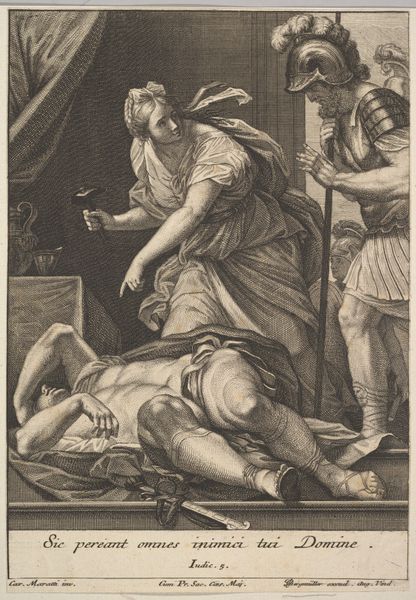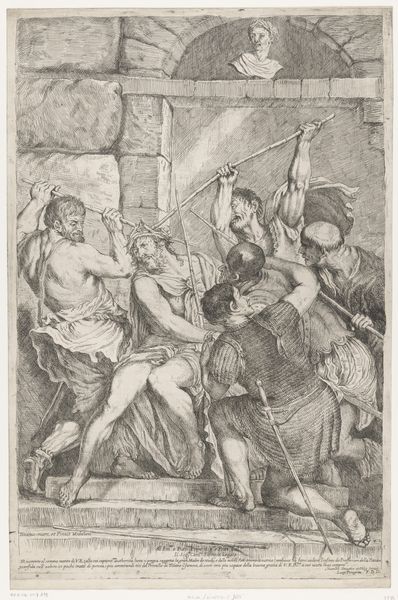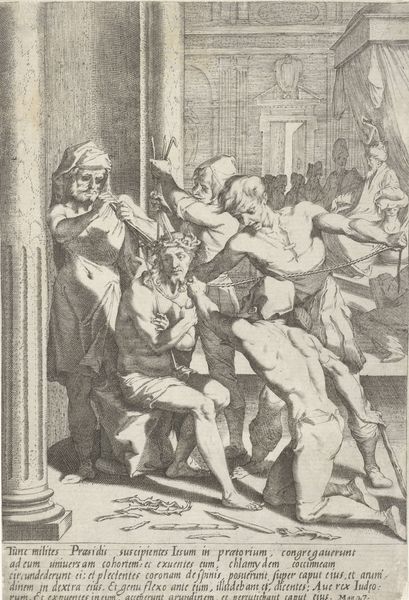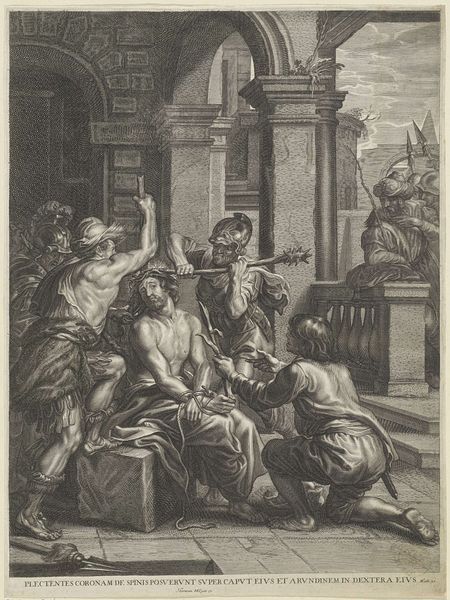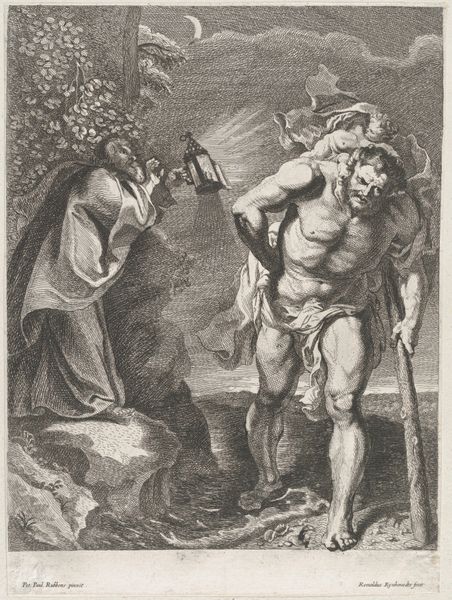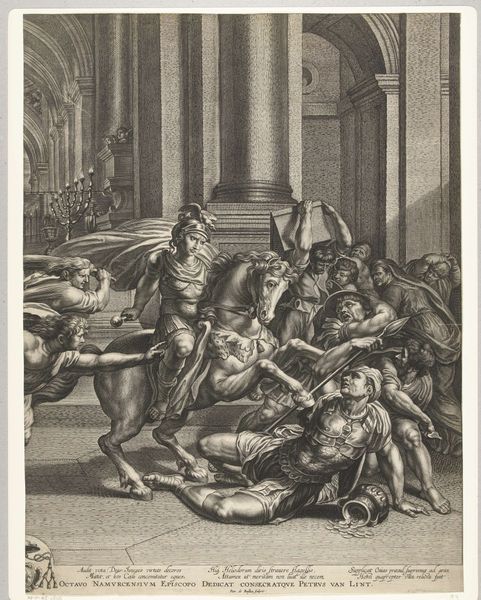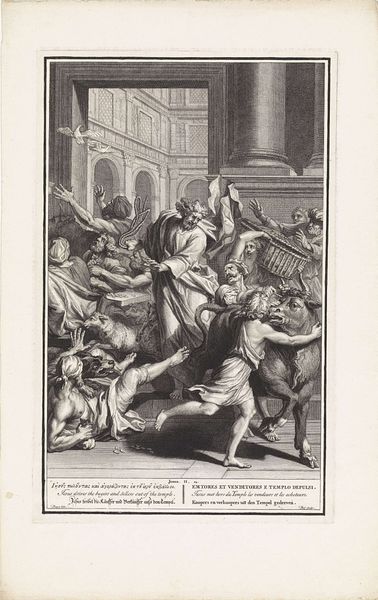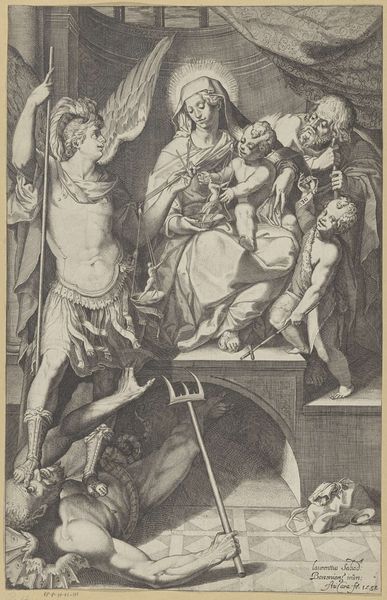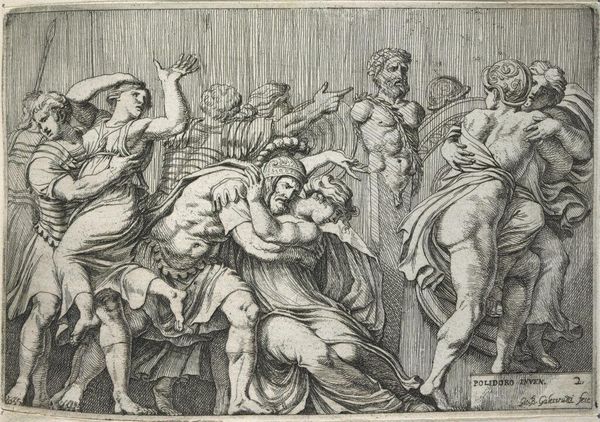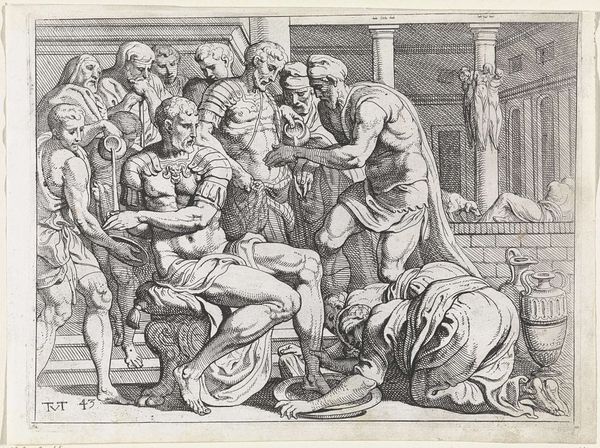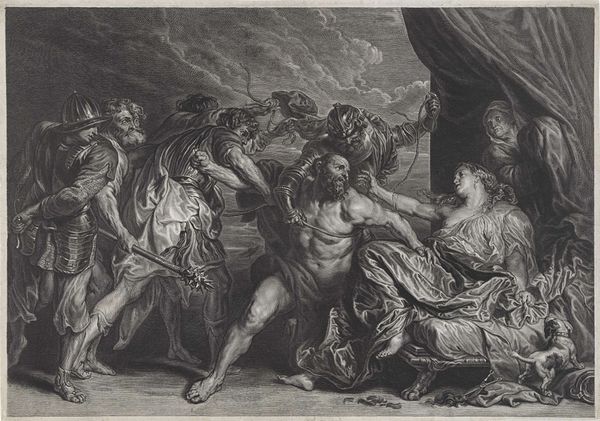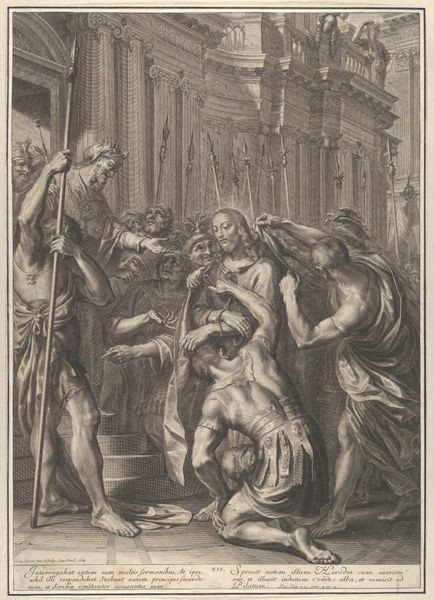
print, engraving
#
narrative-art
#
baroque
# print
#
old engraving style
#
figuration
#
history-painting
#
engraving
Dimensions: height 387 mm, width 291 mm
Copyright: Rijks Museum: Open Domain
Editor: Here we have Paulus Pontius's engraving, "Geseling van Christus," dating somewhere between 1616 and 1657. The scene is, well, quite brutal. What leaps out to me is the theatrical use of light and shadow—very Baroque, I guess. What's your take on this piece? Curator: Ah, yes, "The Flagellation of Christ." A raw depiction of suffering, wouldn't you say? What’s most striking, perhaps, is Pontius’s handling of line; how the fine, delicate incisions in the metal plate give the impression of so much physical anguish. Can you see how the engraver uses line thickness to guide our eyes through the composition? Editor: Yes, I think so! The heavier lines really make those tormentors seem to leap out. The way they're rendered – so muscular and merciless – compared to Christ's… resignation? Curator: Exactly. Resignation, vulnerability. There’s a tenderness there, even amidst the violence, that’s profoundly moving. Think about the cultural context. The image speaks volumes about faith, sacrifice, redemption – weighty themes, don’t you think? Editor: Definitely weighty. I guess it's a potent reminder of the power of art to convey complex ideas, even within constraints. Looking closely helps unpack this, uh, emotionally charged print. I never knew there could be tenderness within such graphic Baroque depictions. Curator: And that is why we keep looking, keep questioning, isn’t it? Every viewing reveals a new facet, a deeper understanding of both the artwork and ourselves. That’s the enduring magic.
Comments
No comments
Be the first to comment and join the conversation on the ultimate creative platform.
